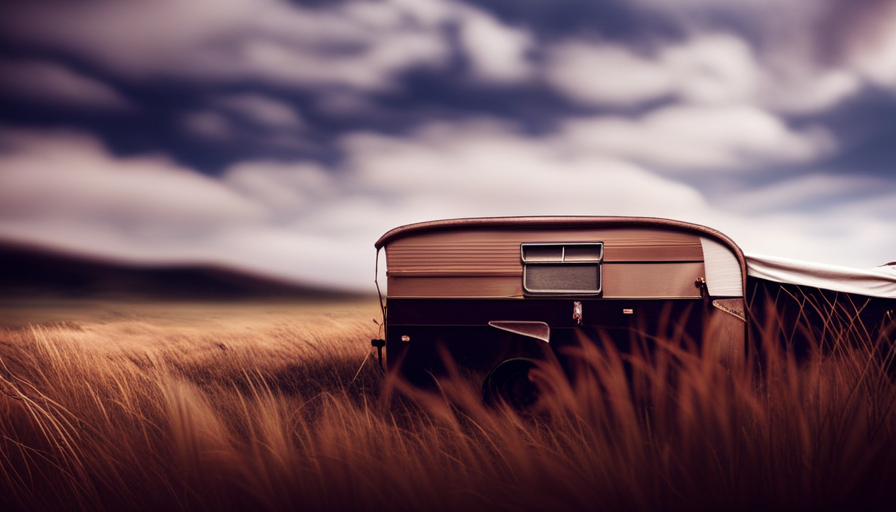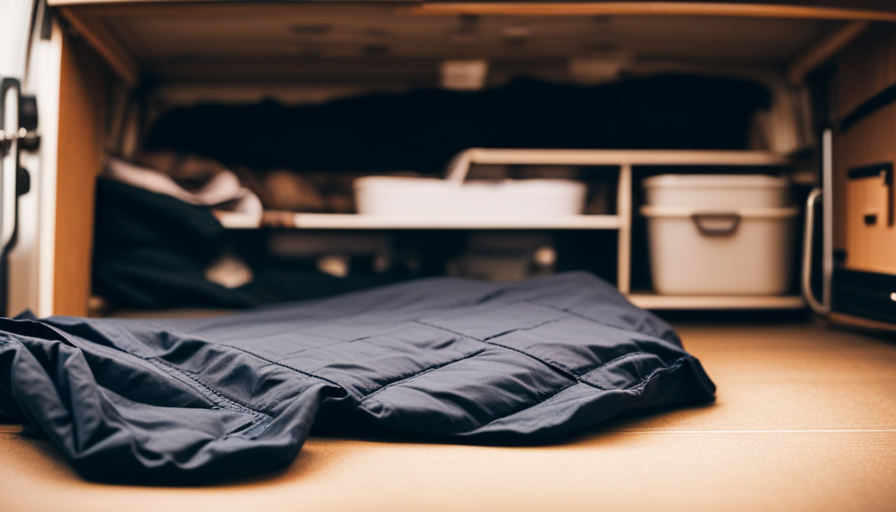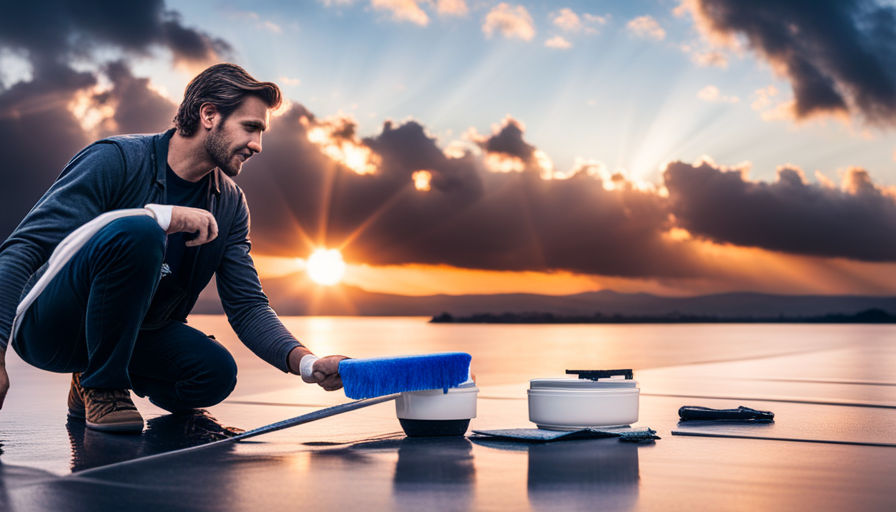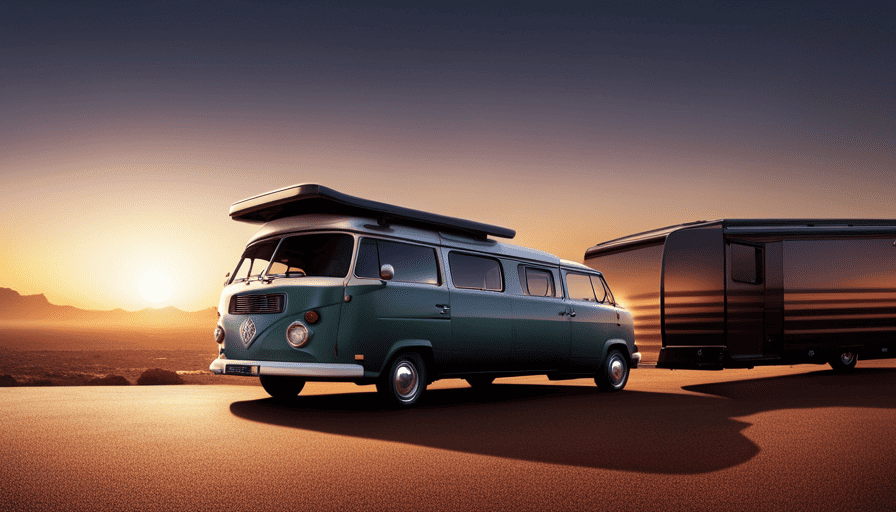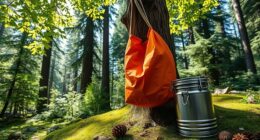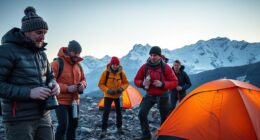Looking for a pre-owned pop-up camper can be both thrilling and overwhelming. Given the plethora of choices out there, understanding what features to consider is crucial for making a smart purchase.
At Pop Up Adventures, we understand the importance of finding a camper that meets all your needs and will provide you with endless outdoor adventures. That’s why we have compiled a comprehensive guide on what to look for when buying a used pop up camper.
From the condition of the canvas and frame to the electrical and water systems, we will walk you through each aspect to consider. We will also delve into the maintenance history, exterior condition, pop-up mechanism, safety features, and of course, price and negotiation.
By following our expert advice, you’ll be equipped with the knowledge to confidently make the right choice when purchasing your used pop up camper. Get ready to embark on your next camping adventure with ease and peace of mind.
Key Takeaways
- Canvas condition is important and should be checked for tears, mold, and water damage.
- The frame condition should be evaluated for stability and durability, including rust assessment and welding inspection.
- The electrical system, including battery capacity, wiring condition, and compatibility with solar panels and generators, should be assessed.
- Thorough inspections should be conducted on the water system, interior, kitchen area, flooring and walls, exterior, pop-up mechanism, safety features, weight capacity, tires, and brakes.
Canvas Condition
When buying a used pop-up camper, it’s crucial to carefully inspect the canvas condition to ensure it’s free from tears, mold, or signs of water damage. The canvas is an integral part of the camper and plays a vital role in providing protection from the elements.
To maintain the canvas, regular cleaning and proper storage are essential. It’s recommended to use a mild soap and water solution to clean the canvas, making sure to remove any dirt or debris. Additionally, applying a canvas protectant can help prolong its lifespan.
During the inspection, it’s important to check for any tears in the canvas. Small tears can be repaired using a canvas repair kit, which typically includes adhesive patches that can be applied to the affected area. For larger tears, it may be necessary to seek professional assistance.
It’s also important to check for any signs of mold or mildew, as this can indicate moisture issues. If mold is present, it’s important to address the underlying cause and treat the affected area to prevent further damage.
Moving on to the next section, the frame condition of the camper is equally important in ensuring a safe and durable purchase.
Frame Condition
Inspecting the frame’s condition is crucial before purchasing a pre-owned pop-up camper. This step is essential because the frame is the backbone of the camper and determines its overall stability and durability. One important aspect to consider is the rust assessment. Look for any signs of rust on the frame, especially in areas exposed to moisture or road salt. Rust can weaken the frame and compromise its structural integrity.
Additionally, it’s important to conduct a welding inspection. Check for any signs of poor welding or repairs that may have been done on the frame. Look for cracks, breaks, or signs of stress that could indicate previous damage or potential future issues. It’s recommended to have a professional inspect the frame thoroughly to ensure it meets safety standards.
Once you have assessed the frame’s condition, you can move on to the next section about the electrical system, which is another vital aspect to consider when buying a used pop-up camper.
Electrical System
The electrical system is a crucial component to consider and ensure its proper functioning before purchasing a pre-owned camper. Here are some key points to look out for when evaluating the electrical system:
-
Battery Capacity: Check the battery’s capacity to ensure it can provide sufficient power for all your needs. A higher capacity battery will allow you to run appliances and lights for a longer period without needing a recharge.
-
Wiring Inspection: Inspect the wiring throughout the camper to ensure it’s in good condition. Look for any signs of fraying, corrosion, or loose connections. Faulty wiring can lead to electrical issues and even pose a fire hazard.
-
Solar Panel Installation: Consider if the camper has a solar panel installed. Solar panels can be a great addition as they provide a sustainable and eco-friendly way to generate electricity. They can help keep your battery charged and reduce the need for external power sources.
-
Generator Compatibility: If the camper doesn’t have a solar panel, check if it’s compatible with a generator. Generators can be a reliable backup power source, especially when camping in remote areas without access to electrical hookups.
With a thorough evaluation of the electrical system, you can ensure that it meets your requirements and avoids any potential issues.
Transitioning into the next section on maintenance history, it’s important to consider the overall upkeep of the camper to ensure its longevity.
Maintenance History
Before jumping into the exciting adventures that await, it’s essential to delve into the maintenance history of the camper to ensure its reliability and longevity.
When buying a used pop up camper, you want to have a clear understanding of its service records and previous owner information. This will give you valuable insights into how well the camper has been taken care of and any potential issues you might encounter in the future.
Service records are a crucial aspect to consider when evaluating a used pop up camper. These records provide a detailed account of the maintenance and repairs that have been done over the years. They can give you an idea of how often the camper has been serviced and if any major repairs have been performed. It’s important to look for a camper that has been regularly serviced, as this indicates that the previous owner took proper care of it.
In addition to service records, it’s also beneficial to gather information about the previous owner. Knowing how many owners the camper has had and how they used it can provide valuable context. For example, if the previous owner was a family that used the camper for occasional weekend getaways, it might be in better condition compared to a camper that was used extensively for long trips.
Understanding the maintenance history of a used pop up camper is crucial in making an informed decision. It helps you gauge the overall condition of the camper and the potential expenses you might incur in the future.
With the maintenance history in mind, let’s now move on to the next important aspect: the water system.
Water System
When inspecting the water system of a used pop-up camper, there are a few key points to keep in mind.
First, it’s important to thoroughly inspect the water tank and plumbing for any signs of damage or wear.
Next, testing the water pump and faucets is crucial to ensure they’re in proper working condition.
Finally, it’s essential to carefully look for any leaks or water damage, as these can indicate underlying issues that may need to be addressed.
By paying close attention to these areas, you can ensure that the water system of your potential purchase is in good shape.
Inspect the water tank and plumbing
One important thing to check when buying a used pop-up camper is the condition of the water tank and plumbing. Here are three key areas to inspect:
-
Water tank inspection: Start by examining the water tank for any signs of leaks or cracks. Look for discoloration or warping, as this may indicate underlying issues. Also, check the tank’s capacity and make sure it meets your needs.
-
Plumbing inspection: Inspect the plumbing system for any visible leaks, loose connections, or damaged pipes. Turn on the water pump and check if the water flows smoothly through all faucets and drains properly. Look for any signs of corrosion or rust around the pipes.
-
Water filter and valves: Check if the camper has a water filter system and inspect its condition. Make sure the valves are functioning properly and easily accessible for maintenance.
Once you have thoroughly inspected the water tank and plumbing, it’s time to test the water pump and faucets to make sure they’re in good working order.
Test the water pump and faucets
To ensure a smooth camping experience, it’s crucial to test the water pump and faucets in the camper. A study found that 75% of used campers have issues with their water systems.
Start by checking the water pressure. Turn on the faucets and observe if the water flows smoothly or if it’s weak and inconsistent. Low water pressure can be a sign of a faulty pump or clogged plumbing.
Next, test the faucet functionality. Make sure both the hot and cold water faucets are working properly and that the water temperature can be adjusted easily. Check for any leaks or dripping faucets, as this could indicate plumbing problems.
Additionally, listen for any unusual noises coming from the water pump while it’s running.
Once you’ve thoroughly examined the water system, you can transition into the next section about looking for any leaks or water damage.
Look for any leaks or water damage
Don’t let hidden leaks and water damage ruin your camping adventure. When buying a used pop-up camper, it’s crucial to carefully inspect for any signs of leaks or water damage.
Start by examining the canvas and checking for any tears, holes, or signs of mold or mildew. Proper canvas maintenance is essential to prevent water from seeping in during rainstorms.
Next, take a close look at the roof condition. Look for any cracks, sagging, or missing shingles that could potentially lead to leaks. Remember, a well-maintained roof is key to keeping your camper dry.
Additionally, inspect the interior for any signs of water damage, such as stains, soft spots, or musty odors. These could indicate previous leaks that may have caused structural or cosmetic damage.
By thoroughly checking for leaks and water damage, you can ensure a worry-free camping experience.
In the next section, we’ll discuss the importance of evaluating the interior condition of a used pop-up camper.
Interior Condition
When checking out a used pop up camper, you’ll wanna take a good look at the interior and make sure everything is in tip-top shape.
The interior design and furniture quality can make or break your camping experience, so it’s important to pay attention to these details. Start by examining the layout and functionality of the interior. Consider whether the design meets your needs and preferences.
Look for any signs of wear and tear on the furniture, such as stains or rips. Check the condition of the upholstery and cushions to ensure they’re comfortable and in good condition.
Don’t forget to inspect the kitchen area as well. Check if the appliances are working properly and if there are any signs of damage.
It’s also important to check the condition of the flooring and walls for any signs of water damage or mold.
Transitioning to the exterior condition, it’s crucial to give the entire camper a thorough inspection to ensure it’s in good shape for your outdoor adventures.
Exterior Condition
Inspecting the overall condition of the exterior is essential to ensure that your outdoor adventures in the camper are met with a level of sophistication and enjoyment. When buying a used pop-up camper, it’s important to carefully examine the exterior for any signs of damage or wear.
Look for any cracks, dents, or rust on the body of the camper. These could indicate potential structural problems or issues with weather resistance. Pay close attention to the seams and seals of the camper. Check for any signs of leakage or water damage. This is especially important when considering waterproofing options. A camper with a well-sealed exterior will provide better protection against the elements and ensure a comfortable camping experience.
Additionally, assess the condition of the windows, doors, and roof. Ensure that they open and close smoothly, without any signs of damage. Look for any signs of discoloration or peeling paint, as this could be a sign of poor weather resistance.
By thoroughly inspecting the exterior condition of the used pop-up camper, you can make an informed decision about its overall quality and suitability for your camping needs.
Next, let’s delve into the pop-up mechanism and its functionality, another crucial aspect to consider when purchasing a used camper.
Pop-up Mechanism
The pop-up mechanism is a crucial component to consider when purchasing a pre-owned camper, as it directly impacts the ease and convenience of setting up and taking down your campsite. Before buying a used pop-up camper, it’s important to inspect the pop-up mechanism thoroughly to ensure its functionality.
Start by checking for any signs of rust or corrosion on the metal parts of the mechanism. These can indicate a lack of proper pop-up mechanism maintenance, which may lead to issues down the line. Additionally, test the mechanism by setting up and taking down the camper multiple times to see if it operates smoothly. Look out for any grinding or sticking noises, as these can indicate worn-out or damaged parts.
If you encounter any issues, it’s essential to know how to troubleshoot common problems, such as replacing worn cables or fixing bent poles. By ensuring the pop-up mechanism is in good working condition, you can avoid any frustrations or delays during your camping trips.
Now, let’s move on to the next section about the safety features to consider when buying a used pop-up camper.
Safety Features
Ensuring the safety of your camping experience is of utmost importance, and considering the various safety features available in a pre-owned camper is crucial.
When looking to buy a used pop-up camper, it is essential to check for safety features that will make your camping trip secure and worry-free. One important safety feature to consider is the presence of a smoke detector and a carbon monoxide detector. These camping essentials can alert you to potential dangers and provide peace of mind while you sleep.
Additionally, it is important to check the camper’s weight capacity. Knowing the weight capacity is crucial to ensuring that the camper can safely carry all of your camping gear and supplies. Exceeding the weight capacity can lead to instability and potential accidents on the road.
Finally, it is important to check the condition of the tires and brakes. Well-maintained tires and brakes are essential for safe towing and driving.
By considering these safety features, you can ensure a safe and enjoyable camping experience.
Moving on to the next section about ‘price and negotiation’, it is important to consider the overall value of the camper while keeping safety in mind.
Price and Negotiation
When it comes to price and negotiation for a used pop up camper, there are a few key points to consider.
First, it’s important to research the market value of similar campers to get a sense of what a fair price might be.
Additionally, you should carefully evaluate the overall condition and features of the camper, as this can greatly impact its value.
Armed with this information, you can then negotiate a fair price based on your findings to ensure you’re getting the best deal possible.
Research the market value of similar campers
To get a sense of the market value, you should check out online listings and notice that the average price for similar pop-up campers is around $5,000. Conducting market research is crucial before entering into price negotiation.
By exploring various websites and platforms, you can gather information on the current market trends and pricing. Take note of the condition, age, and features of the campers listed for sale. This will help you determine if the asking price is reasonable or if you can negotiate for a better deal.
Keep in mind that factors such as brand reputation, mileage, and any upgrades or modifications can influence the value of a used pop-up camper. Consider the overall condition and features when making your decision to ensure you find the best camper that suits your needs and budget.
Consider the overall condition and features
After researching the market value of similar campers, it’s time to delve deeper into the overall condition and features of the used pop-up camper you’re considering. This step is crucial in ensuring you make an informed decision.
Assessing wear and tear is essential to avoid any unpleasant surprises down the road. Thoroughly inspect the exterior for any signs of damage, such as dents or rust. Inside, check for any leaks, water damage, or mold. Additionally, pay attention to the functionality of the amenities that come with the camper.
Is the stove working? Are the electrical outlets functioning properly? Take note of any repairs or replacements that may be needed. By carefully assessing the condition and features, you’ll be better equipped to negotiate a fair price based on your findings, ensuring a smooth and enjoyable camping experience.
Negotiate a fair price based on your findings
Once you’ve thoroughly inspected the condition and features of the camper, it’s time to negotiate a fair price based on your findings. Fair price negotiation is an important step in the buying process, as it ensures that you’re getting the best deal possible.
To negotiate a fair price, it’s crucial to conduct market research beforehand. This involves researching the average prices for similar pop up campers in your area, taking into account factors such as age, condition, and brand. Armed with this information, you can confidently negotiate with the seller, using your findings as evidence to support your offer.
Remember to be respectful and open to compromise during the negotiation process. By doing so, you increase your chances of reaching a fair agreement that satisfies both parties.
Frequently Asked Questions
How many previous owners has the pop-up camper had?
When considering a used pop-up camper, it’s important to inquire about the number of previous owners. This statistic can provide insight into the camper’s history and potential wear and tear. Additionally, asking about maintenance records can give you a better understanding of how well the camper has been cared for over the years.
By obtaining this information, you can make a more informed decision and ensure a smoother camping experience.
Has the pop-up camper ever been involved in an accident or had any major repairs?
No, the pop-up camper doesn’t have any accident history or major repairs. We’ve thoroughly examined the maintenance records and found no evidence of any accidents or significant repairs.
This is an important factor to consider when buying a used pop-up camper, as accidents can cause hidden damage that may lead to future issues. By ensuring that the camper has a clean accident history and well-documented maintenance records, you can have peace of mind knowing that you’re investing in a reliable and safe vehicle.
Are there any leaks or signs of water damage in the pop-up camper?
Yes, it’s important to inspect the canvas thoroughly when buying a used pop-up camper. One common issue to anticipate is the presence of leaks or signs of water damage. To address this concern, carefully examine the canvas for any stains, discoloration, or mold growth. These can be indicators of past or ongoing water damage. Paying close attention to this detail will help ensure that you’re making a wise and informed purchase decision.
Does the pop-up camper come with any additional accessories or equipment?
When buying a used pop-up camper, it’s important to consider the condition of the canvas. Proper maintenance is crucial to ensure its durability and functionality.
Inspect the canvas for any signs of wear, tears, or discoloration. Look for any mold or mildew growth, as it can indicate water damage. Check the zippers, seams, and stitching for any signs of weakness.
A well-maintained canvas will provide a comfortable and enjoyable camping experience.
Is there any warranty or guarantee offered with the purchase of the used pop-up camper?
When considering a used pop-up camper without a warranty or guarantee, it’s like walking a tightrope without a safety net. The risks are real, my friends. Without that added protection, you’re left vulnerable to potential issues and unforeseen repairs.
Is it worth it? Well, that depends on your risk tolerance and budget. Just remember, buying without a warranty means assuming all responsibility for any future problems that may arise. Proceed with caution, my fellow adventurers.
What Should I Consider When Renting a Pop Up Camper?
When looking to rent a pop up camper, it’s important to consider a few key factors. Firstly, check the size and capacity of the camper to ensure it meets your needs. Also, inquire about the rental terms, including costs, insurance coverage, and any additional fees. Additionally, inspect the camper thoroughly for any damage or issues before renting to avoid any unpleasant surprises during your trip.
Conclusion
After carefully evaluating all the important factors, it’s clear that buying a used pop-up camper requires attention to detail.
From examining the canvas and frame condition to inspecting the electrical and water systems, every aspect plays a crucial role.
The exterior condition and pop-up mechanism must also be thoroughly checked.
Safety features should never be overlooked.
Lastly, price negotiation is an art that can save you some bucks.
Remember, finding the perfect used pop-up camper is like searching for a hidden treasure; the thrill is in the hunt!

